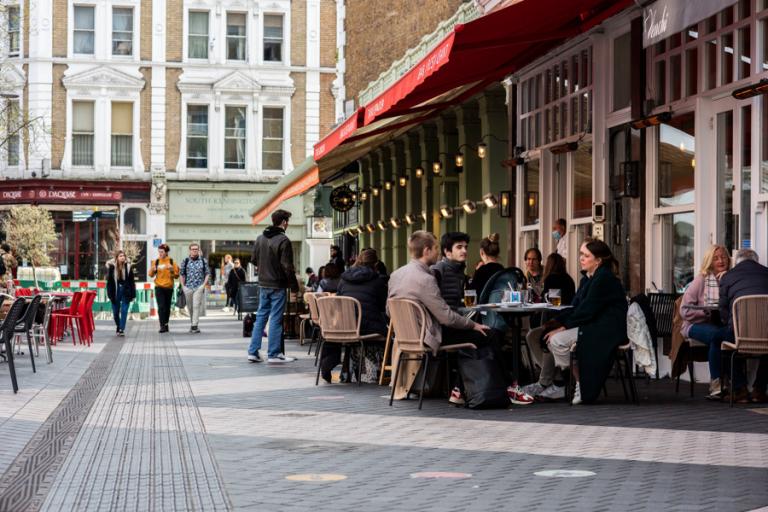Published: Monday 16 August 2021

New research on Kensington and Chelsea’s high streets is being conducted by Centre for London, reviewing the impact of temporary measures introduced by the Council during the pandemic, including al fresco dining facilities, public seating and pedestrianisations, along with transport and travel research to follow in the autumn.
Since the pandemic, measures were brought in to help businesses recover and residents stay safe. These include:
- branding high streets to create a ‘village’ feel
- facilitating more al fresco dining
- pedestrianisation of key areas including Portobello Market and Thurloe Place
- public seating and greenery
The Council has commissioned the independent study to help learn from these interventions and see if there is value to maintaining and building on them now lockdown has lifted.
Some measures are already set to stay into next year. Thanks to the Business and Planning Act, the Council has been able to issue pavement licences to aid al fresco dining that will last until September 2022. The scheme has been popular with businesses throughout the pandemic, allowing hospitality businesses to offer approximately 3,000 additional al fresco dining seats. The Council’s Licensing team issued over 450 licences since July 2020, with demand continuing to grow into the summer months of 2021.
Cllr Catherine Faulks, Lead Member for Economy, Employment and Innovation said:
“While this year has brought about many challenges, there have also been some unique opportunities to look at new ways of utilising our high streets, supporting local businesses and improving our local areas for residents and visitors.
Some of these have shown to be a great success, such as the introduction of pavement licences, and the research from Centre for London will help us create better high streets for the future.”
Claire Harding, Research Director at Centre for London said:
“We are delighted to be leading this research on the future of Kensington and Chelsea’s high streets.
“High streets are at the heart of local communities – 70 per cent of residents in the borough live within 200 metres of a high street – and for many people their importance has increased through the pandemic as we have stayed more locally. In this research, we will review the changes that have been made during the pandemic and learn from what has happened elsewhere to give the council ideas for what could come next.”
This is the first phase of two-phased research. The first report delivered by Centre for London will provide an insight into the benefits of these interventions on visitor numbers, economic recovery for local businesses and the potential challenges faced by the Council as lockdown ends.
The second phase of the report will happen in the autumn and look at how people are moving around the borough and post-Covid transport patterns across London. This follows a decision in March to work with an academic partner on research for a longer term solution to active travel in the borough. Centre for London will announce their academic partner for phase two later this year.
As well as conducting the research, Centre for London will be working with the Council to deliver a set of practical plans, based on their findings, to help local high streets and town centres recover from the pandemic and prepare for the future.
Alongside this, during August and September the Council is running survey with CommonPlace to get residents’ views on the interventions so far in the high streets and feedback on how they could be improved. You can take part at https://kcfuturehighstreets.commonplace.is.
Find out more about the Centre for London research at https://www.centreforlondon.org/project/place-shaping-kensington-chelsea/.
